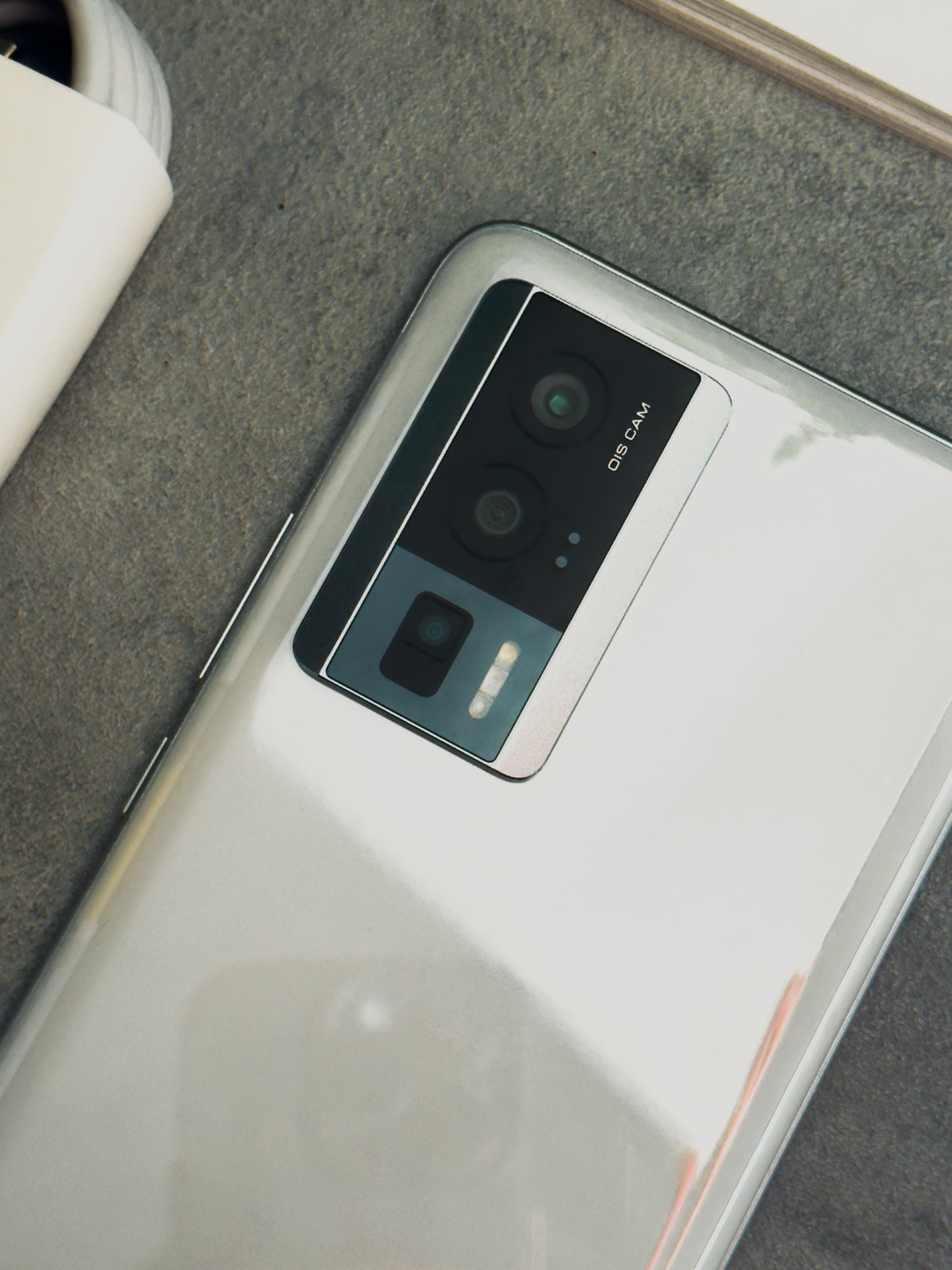Meet the Poco F5 Pro, the latest mid-range phone wanting to offer the best bang for your buck. Does it? Our Poco F5 Pro review will explore everything from the camera to the battery life. Spoiler alert: this display is superb – and we brought receipts to prove it.
Poco F5 Pro Design: Look and feel
But let’s start with the design.
Unlike brands like Vivo, who experiment with funky colors and materials, on the Poco F5 Pro design there’s nothing really revolutionary. While it might be an understated, common design and a plastic build, this phone does feel nice to hold.





Thanks to the lack of curved edges on the screen it somehow feels more premium and, despite the decent battery, it isn’t as heavy as you’d expect.
And yes, this seems to be a rebranded Redmi K60 Pro, as is traditional with Xiaomi’s sub-brands (something we’ve seen before with the Poco M5s). It does have a slightly smaller battery as well, which was a puzzling choice. If you’re going to launch the same device essentially, why tinker with one spec? Fortunately, the speed is the same – you have 67W fast charging via the cable and 30W fast wireless charging.
Still, all in all, any name or number quickly gets forgotten after you take a single glance at the gorgeous display on Poco F5 Pro.
The numbers say it has a 6.67-inch AMOLED display with a 3,200 x 1,440-pixel resolution, 120 Hz refresh rate and 1,400 nits peak brightness.
Our eyes simply said “gorgeous” at first glance and we had to go and compare it with other, more expensive devices, just to convince ourselves that it’s real.
Here’s the Poco F5 Pro display in comparison to both the iPhone 14 Pro and the Samsung Galaxy S22 Ultra we had around the office.
The top render is on Galaxy S22 Ultra, the middle one is the Poco F5 Pro and, on the bottom, the iPhone 14 Pro.

From top to bottom: the display on Galaxy S22, Poco F5 Pro and iPhone 14 Pro
Basically, we tested the Poco F5 Pro display (and camera, but more on that later) against last year’s flagships.We were surprised to find it can definitely hold its own, despite being such an affordable phone.
As you can see, despite this phone being more than half the price, it looks just as good (more comparisons here). Just on the display alone, we’d consider the Poco F5 Pro a best buy, but let’s look at what else it has to offer.

From top to bottom: the display on Galaxy S22, Poco F5 Pro and iPhone 14 Pro
Also, bonus points for the speakers here. While they can sound tinny, they’re super loud.
Thanks to Dolby Atmos and a bit of tinkering, they can however end up sounding great.
Just like with an ASUS Rog phone, which sounds great if you leverage the DTS feature, here, if you use Dolby and fiddle with the EQ to bring the mediums down, you can have a great sound.

Poco F5 Pro Pro specs and performance
The short summary of the Poco F5 Pro specs? A Snapdragon 8 Plus Gen 1, a 5,100 mAh battery and a 64MP camera setup. As for RAM and storage options, there’s 8/256 GB, 12/256 GB, and 12/512 GB combos available.
We received a review unit with 12 GB of RAM that can be expanded with another 3GB by dipping into storage. Obviously, those specs mean that the Poco F5 Pro is capable of handling most any task you throw at it and we experienced no issues in testing it – other than actually running benchmarks.
We couldn’t run most benchmark apps on it, with 3DMark throwing up an error saying some devices prevent benchmarking apps on them. On PCMark Work 3.0 performance report, the Poco F5 Pro scored 13642 – very respectable.
As you can see from the Poco F5 Pro Geekbench results, this is one capable device – not anywhere near Apple’s A15 Bionic, but way above one of last year’s Android flagships.

Geekbench on Poco F5 Pro (middle), iPhone 14 Pro and Samsung Galaxy S22
Still, we’re not big fans of benchmarks, as in our experience they don’t reflect real life use. All in all, handling the Poco F5 Pro has been a pleasure and we’ve experienced no bugs.
As is the case with most Poco or Redmi phones, you have the latest Android here with MIUI 14 layered on top. We’re also glad Xiaomi is keeping the IR blaster alive so, if you misplaced your TV remote, your phone can pull double duty more easily.
Poco F5 Pro Pro Camera
Since phones nowadays try to double as pro cameras, the Poco F5 Pro is no exception and brings a surprisingly competent setup.
Comparing the Poco F5 Pro with iPhone 14 Max or Galaxy S22 might have seemed like we’re stacking the odds against this midranger but there isn’t such a massive difference between them – not when you consider the price tag differences as well.







Of course, that’s about the main camera.
The selfie camera overall is ok, featuring a 16MP sensor that’s limited to just 1080p in video mode. That’s a bit disappointing but something we also saw on the Xiaomi 13 which, despite having great video capabilities on the back, also did not have 4K on the front.
As for the selfies themselves, those are more than decent and keep things very natural.
Even though the 16MP camera can’t do vivid colors, selfies have an uniform hue that looks good in most circumstances. We particularly liked the beautification options here. You have smoothing for major flaws or wrinkles but the camera also adds back some texture to create a natural feel, so the result is very pleasing.

The Poco F5 Pro main camera also has some great tricks. On the back of the phone you have a 64MP main camera with f/1.8 aperture, an 8MP ultrawide-angle sensor with 120-degree FoV, and a 2MP macro camera.
We particularly appreciated the Portrait mode. The bokeh effect works great all the time, even when taking photos of people with curly hair. It’s not quite as perfect as a Samsung or an iPhone, but it offers great shots with little effort.
Even in their launch event, Poco really emphasized the way they managed to drive down costs – and compared their phone directly to the Galaxy S23.

Launch event – comparison between Poco F5 Pro vs Galaxy S23
Here are some camera samples and we added to this drive dozens more you can see at a full resolution.


Poco F5 Pro portrait on the right, standard mode on the left
When shooting with an iPhone, you’ll notice that, due to the huge sensor, you can’t really focus up close and you have to stay away from the subject, but here the minimum focus distance is much smaller.
Poco F5 Pro and other Xiaomi phones also have something iPhones don’t, which is the option to set sharpening to negative. When you want a softer look, a minus 1 at sharpening looks great.
All in all, the Poco F5 camera works great for photos, a lot better than expected in a mid range phone. The main camera detects subjects very fast, has a good autofocus and the 2X crop looks great in natural light.
When you have the AI active, it quickly detects what you’re looking at – pets or food – and it doesn’t do a crazy color saturation, it just tinkers with the vibrancy for good, natural-looking shots.
If you want to go artsy, there’s a big range of filters available.
Low light performance is decent. However, to apply contrast, the Poco F5 Pro camera does tend to sacrifice details in the shadows, and sometimes has noticeable clipping.
We also noticed the 0.6x has a bit of noise issues too, as well as a slight magenta tint compared to the main camera.
Also read: Xiaomi Mi 12T Pro Review: Top Camera & Specs with An Affordable Price Tag

When it comes to doing video on the Poco F5 Pro, things can be confusing due to the resolution constraint, FPS cap and HDR capabilities on the cameras.
Somehow, HDR isn’t on by default, so if you’re shooting 4K and forget to turn it on, you’ll notice highlights will clip quite fast. Stabilization works so and so, it’s serviceable but not something amazing.
Still, for a midrange phone, if you shoot in 4K with both HDR and stabilization on, the footage is more than decent.
If you want to film in 8K, you won’t have HDR, and the footage tends to be noisy, so there’s room for improvement there.
We added dozens of Poco F5 Pro camera samples in this Google Drive, including 16MP vs 64MP samples, so, if you want the nitty gritty, you have everything there.

All in all, if you look at the photos and videos you took, you’d probably think we’re talking about a flagship phone. No, it’s a midrange device that truly delivers value.
The Poco F5 Pro is just 429 euros for the entry model and 479 euro for the model like the one we tested, the 12GB RAM + 256GB storage.
What more could you ask for at this price point?
Follow TechTheLead on Google News to get the news first.






















